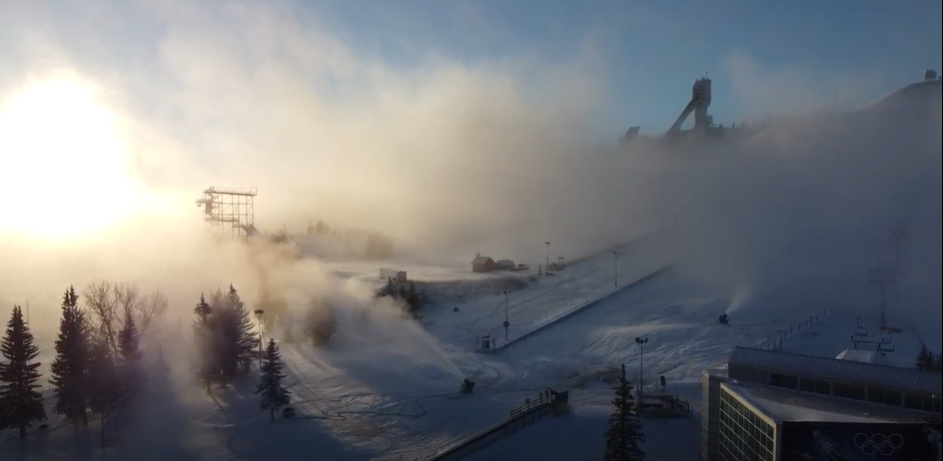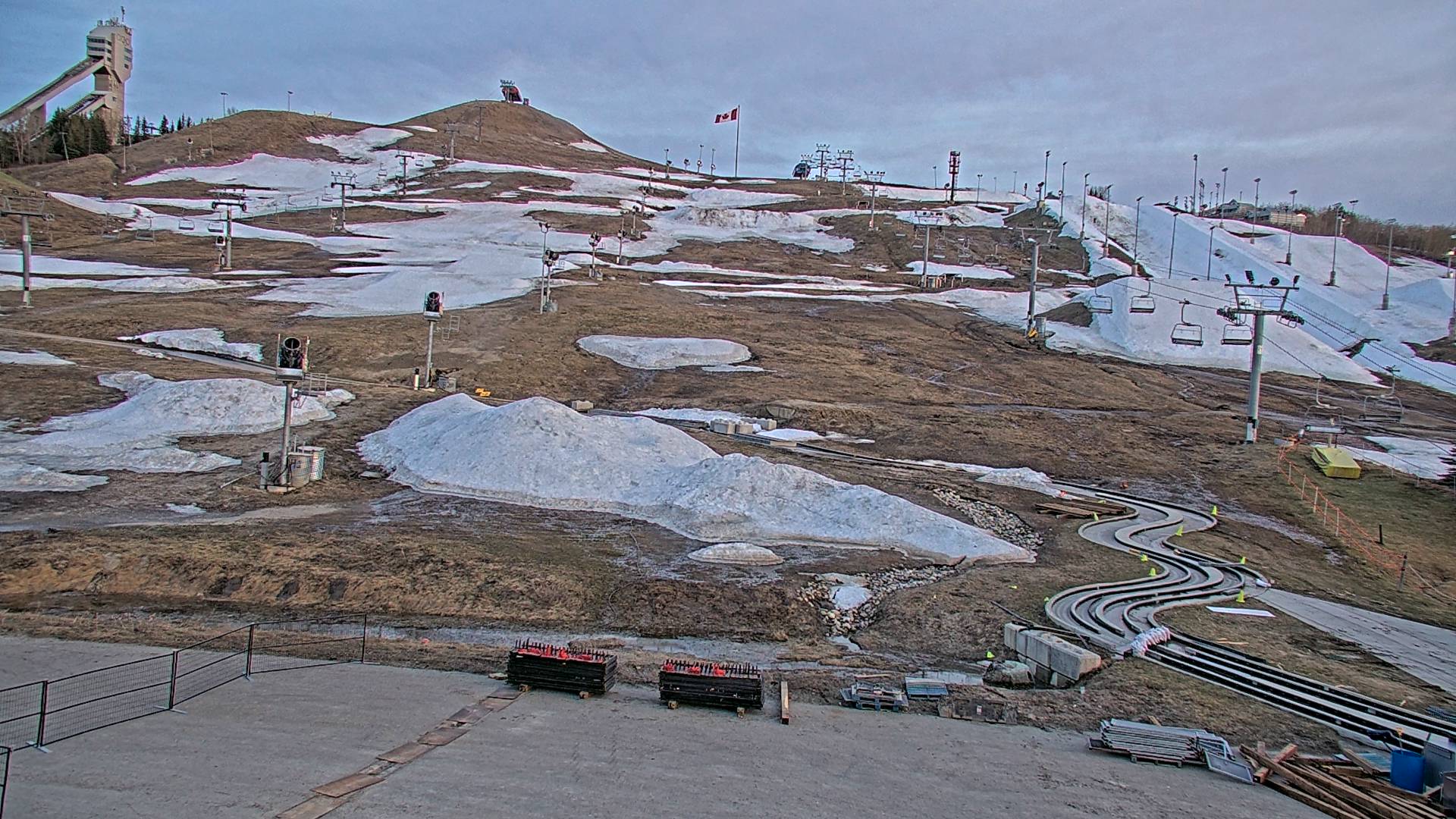The Snowball Effect: All you need to know about snowmaking at WinSport
Nov 20, 2024
Once those temperatures drop, it's a chain reaction.
Considering Calgary is just starting to undergo its seasonal switch to extended periods of colder weather, WinSport’s winter hill had remained without that primary, seemingly elusive necessity.
Although a heavy snowfall is never relied upon for the hill to get up and running, Mother Nature didn’t start until this week to provide what’s needed to produce the all-important manmade snow.
“We’re looking for six (consecutive) 24-hour periods of -2˚C or colder so that we can get a good base of 30-50 cm of snow,” says Ian Newcombe, WinSport’s Manager of Venues who oversees snowmaking operations. “Our goal is to be able to get the main hill and the novice area open so that we can get lessons going because we are a hill that is a learn-to-ski place. Then we start stretching our way out to the terrain park and move over to the Servus Tube Park and the race pitch for training.”
Once the required temperature thresholds are met, Newcombe and his team begin running their state-of-the-art snowmaking system for skiers, snowboarders, and winter tubers to get the go-ahead shortly thereafter.
WinSport plans to announce on Thursday, Nov. 21, when the season will officially open.
“Over the last eight years, we’ve invested in a high-tech, automated system so that we can make snow,” Newcombe explains. “Artificial snow is made through high-pressure air and water, and it needs a nucleus to make a snowflake. We add a product called Snomax, and that gives us the microscopic particle into the water which is the nucleus of that snowflake. So, we are making real snow, not just frozen water.”
In fact, Newcombe can begin the process of covering the entire area with snow from the warmth of his office located at the bottom of the hill. The days of going outdoors to fire up all 46 snow guns scattered across the slopes are no more.
“One of the benefits of this automated system is the ability to turn the snow guns on and turn the snow guns off from the computer,” notes Newcombe. “It really allows us to maximize those snowmaking windows. If we see a cold front coming in, we can turn everything on from the computer whereas in the past, we would have to send Team Members out on foot to manually turn all these snow guns on. Now we can hit every single window necessary to get the snow on the hill and open it (as soon as possible).”
As soon as the weather is suitable for snowmaking, it’s a full-on blitz to accumulate enough quantity to hopefully stick around to the end of the ski and snowboard season.
“We usually make all our snow within about a two-to-three-month period at the beginning of the year, and that snow will last us up until April,” Newcombe details. “There are a few times when we can have a lot of warm Chinooks, so we may need to top up. But with some fresh snow coming in and the cold temperatures and us grooming the hill every day, the snow quality stays very good throughout the season.”
And eventual guests can be comforted by the fact that once the pendulum fully swings to extreme cold temperatures, snow production will remain at full blast.
“The colder, the better,” beams Newcombe, whose kids are now the fourth generation of his family to grow up skiing on the same winter hill. “If it’s -30˚C, that’s our Super Bowl. When the city slows down, we’re out here making snow. That allows us to make a huge volume of snow with less water, which is the most efficient snowmaking we can have.”
The green light didn’t come soon enough, and the snowmaking team is now working around the clock to put some white in the Great White North, literally.
“Our team here is pretty small, and we wear a lot of hats,” Newcombe asserts. “We’re running 24 hours, seven days a week so that we’re ready to make snow at any time. We have a team that does a day shift, a team that does an evening shift, and a team that does a night shift. We’re always ready to go.”

